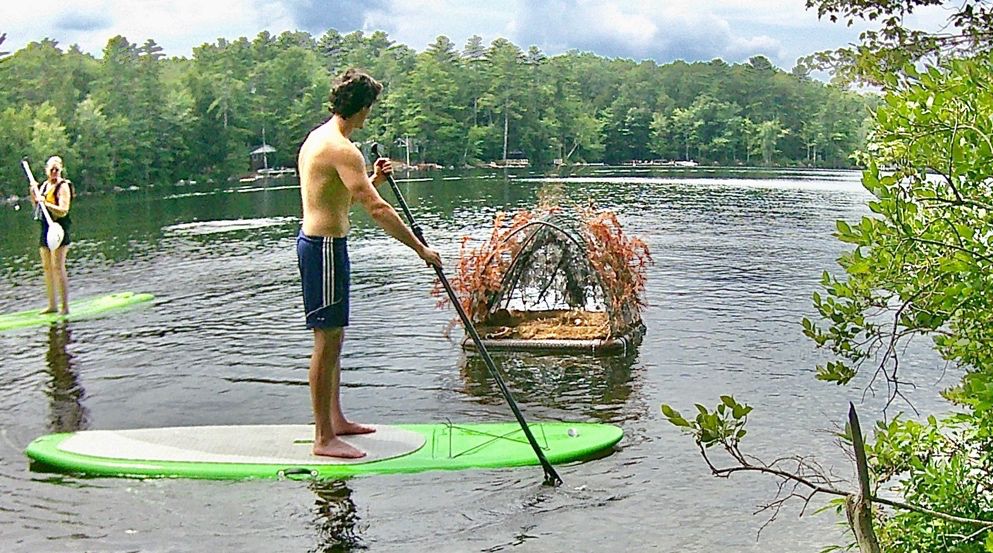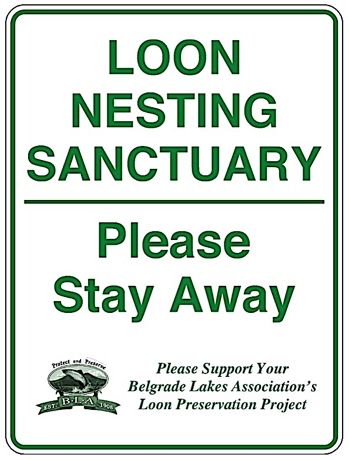
What Does Human Interference Look Like?

I just came in from another day of surveying our Loons on Long Pond and observed one more example of human interference which was totally without malice but was certainly interference with the livelihood of our breeding loons. In this case, a paddleboarder went right up to the nest and around it and of course, not seeing a loon on the nest nor in the immediate vicinity, considered her activity perfectly inquisitive, educational and “normal” — in the human sense.
The problem was that there was a loon just 40 yards away watching the entire scene. So, you ask, why is this loon still by their floating nest when the breeding season is supposed to be over? Because, until they fly off in November, this is still their nest and their territory which we just happen to be sharing.

If this intrusion just happens once every two or three weeks, we may not flush the bird from its nest, but every other day, which is happening more and more, we will lose that nesting pair and nest! Both of our floating nests in upper Long Pond never had loons nesting this year, and human interference was confirmed multiple times in both cases. On a nearby natural island nest, it too was abandoned due to numerous visits by a small fishing skiff and inquisitive paddle boarders, kayakers, and swimmers.
Their nests are theirs from Memorial Day through October, and we need to recognize that and give them their space. While I was out, I twice approached nests from a distance of about 40 yards — I use 10 × 42 binoculars — and, in both instances, I didn’t see a loon as I approached, but both times when I was leaving the area, up popped a loon who had me in their sights the entire time.

So, what is the take away here? Basically, a nest is off limits whether there is a loon sitting on it or not. If you are out in your kayak and a loon comes over, it might very well be catching your attention to follow it out and away from where you were spotted. They are particularly adept of getting your attention and leading you away from their nest, chick, or just being “in their face”!!!! They are not coming over to say “Hi!”

So why don’t we just put out a sign on a tree or a floating sign nearby to keep people away from the nests? Do we really think that a sign is going to deter the majority of people or, attract more sightseers? It’s a double edge sword. Public education such as the Summertime In The Belgrades provides an excellent service in getting the word out, but it takes the ongoing efforts of all of us and the community that loves these lakes and wildlife and wants to preserve what we have. It is a fragile ecosystem! Remember, we have collected 11 abandoned eggs this year, which should have been chicks!
If you have a particular question regarding our Belgrade loon population, please email your inquiry to info@blamaine.org and we will try to answer your question either in this column or via email. Thank you for your help, and enjoy this incredible legacy!
Dick Greenan is chairman of the Belgrade Lakes Association’s Loon Preservation Project.
Download Full Newspaper: High Res | Low Res (Details…)
<— Previous Article • Summaries • Next Article —>
©2024 by Summertime in the Belgrades. All rights reserved.